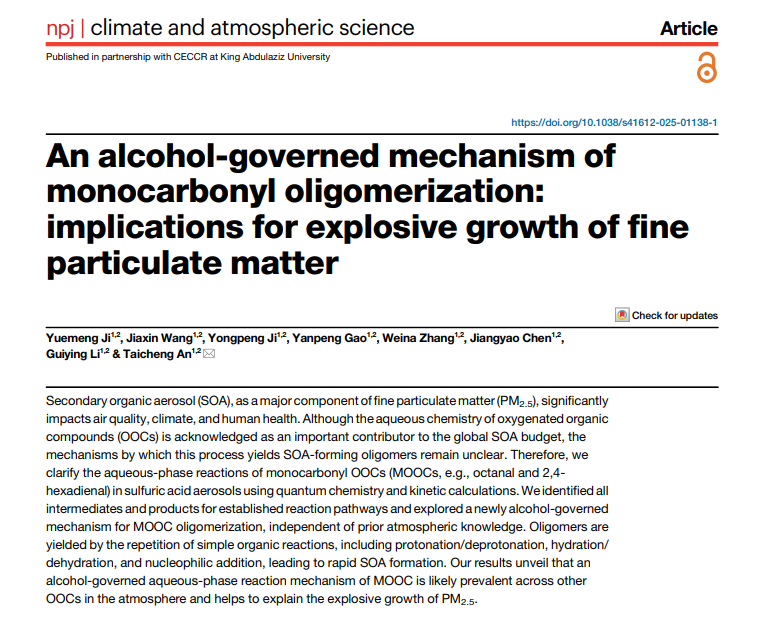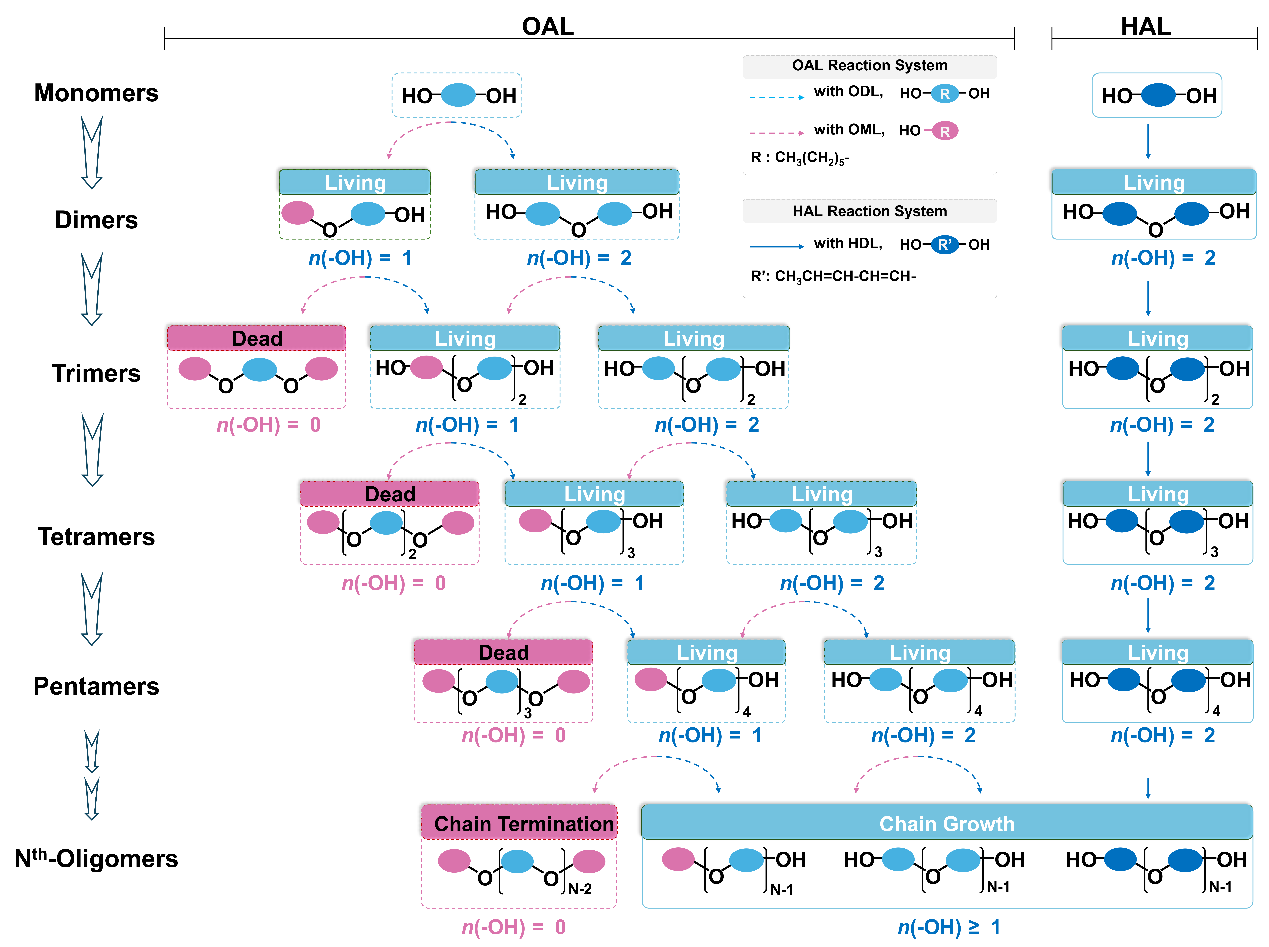近日,广东工业大学环境健康与污染控制研究院、环境科学与工程学院安太成教授团队题为《An alcohol-governed mechanism of monocarbonyl oligomerization: implications for explosive growth of fine particulate matter》的学术论文在npj Climate and Atmospheric Science杂志发表(npj Clim Atmos Sci, 2025, 8, 252, https://doi.org/10.1038/s41612-025-01138-1)。论文的主要作者为姬越蒙教授和博士生王甲新,通讯作者为安太成教授。该研究主要聚焦于单羰基含氧化合物在气溶胶内的液相转化化学反应过程,发现了醇中间体在单羰基含氧化合物液相聚合中的调控作用。该调控机制揭示了单羰基含氧化合物低聚反应贡献细颗粒增长的机制,对后续大气中更多含氧有机物的研究具有一定的启示意义。

论文链接:https://www.nature.com/articles/s41612-025-01138-1
二次有机气溶胶(SOA)是细颗粒物(PM2.5)的主要组成部分,对空气质量、气候和人类健康具有显著影响。含氧有机物(OOCs)的水相化学反应被认为是全球SOA预算的重要贡献者,但其生成SOA低聚物的具体机制仍不明确。特别是,种类繁多且丰度很高的单羰基化合物(MOOCs)的低聚化学反应被忽视。因此,本研究通过量子化学和动力学计算,旨在阐明以辛醛(OAL)和2,4-己二烯醛(HAL)为代表的MOOCs在硫酸气溶胶中的水相反应,并揭示低聚化学反应机制。本研究首次系统性地提出并建立了一个由醇类化合物扮演关键角色的“可切换的低聚化学反应机制”。该机制包含三个核心步骤:(i)初始分子经质子化、水合等反应生成单羟基或二羟基醇中间体;(ii)醇中间体经质子化和脱水生成高活性的碳正离子(CBs);(iii)碳正离子与醇中间体发生加成反应,形成并传播低聚物链。此规律最关键的特征是:醇中间体的羟基数量决定了其既扮演“引发者”又是“终结者”的角色,从而控制了低聚物链是持续增长(形成活性低聚物)还是就此中断(形成死低聚物)。这一化学反应机制同样适用于解释大气中普遍存在的二羰基化合物(如乙二醛)的快速聚合,并指出其聚合过程也可能被大气中广泛存在的单羟基醇所抑制。该成果可以为解释中国等地区尤其是在醇类污染物普遍存在的城市环境中大气中PM2.5的“爆发性增长”现象提供了坚实的分子层面的科学依据。
成果摘要图

英文摘要:
Abstract:
Secondary organic aerosol (SOA), as a major component of fine particulate matter (PM2.5), significantly impacts air quality, climate, and human health. Although the aqueous chemistry of oxygenated organic compounds (OOCs) is acknowledged as an important contributor to the global SOA budget, the mechanisms by which this process yields SOA-forming oligomers remain unclear. Therefore, we clarify the aqueous-phase reactions of monocarbonyl OOCs (MOOCs, e.g., octanal and 2,4-hexadienal) in sulfuric acid aerosols using quantum chemistry and kinetic calculations. We identified all intermediates and products for established reaction pathways and explored a newly alcohol-governed mechanism for MOOC oligomerization, independent of prior atmospheric knowledge. Oligomers are yielded by the repetition of simple organic reactions, including protonation/deprotonation, hydration/dehydration, and nucleophilic addition, leading to rapid SOA formation. Our results unveil that an alcohol-governed aqueous-phase reaction mechanism of MOOC is likely prevalent across other OOCs in the atmosphere and helps to explain the explosive growth of PM2.5.
资助项目:国家自然科学基金 (42020104001和42077189), 广东省基础与应用科学基金(2025A1515011379), 广州市科技菁英领航项目(2025A04J7038)和广东省科技计划重大项目(2022-GDUT-A0007).